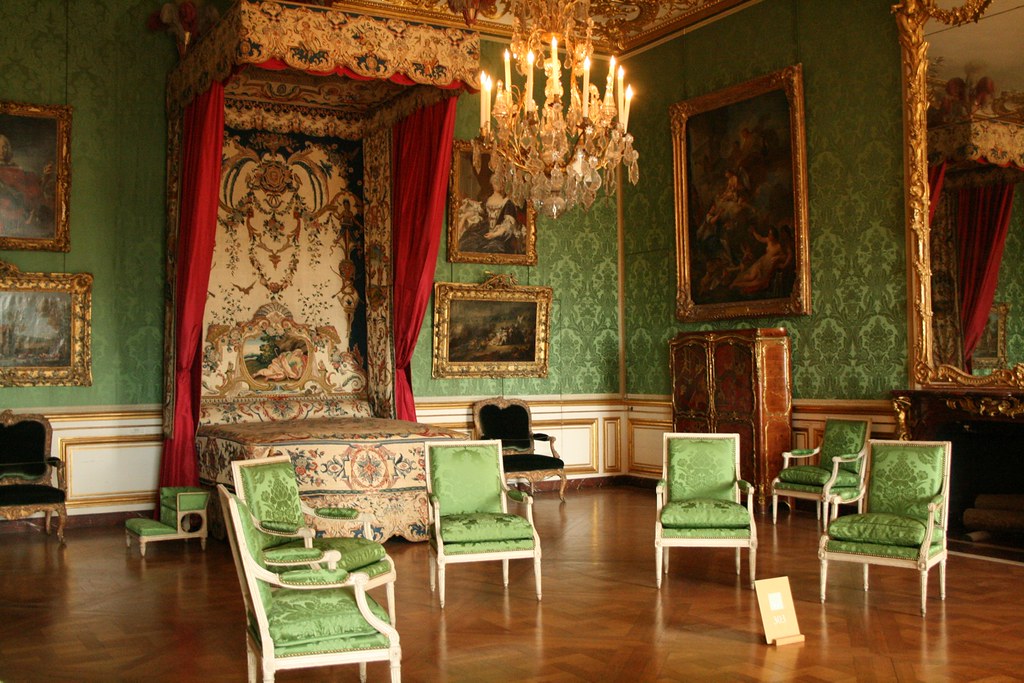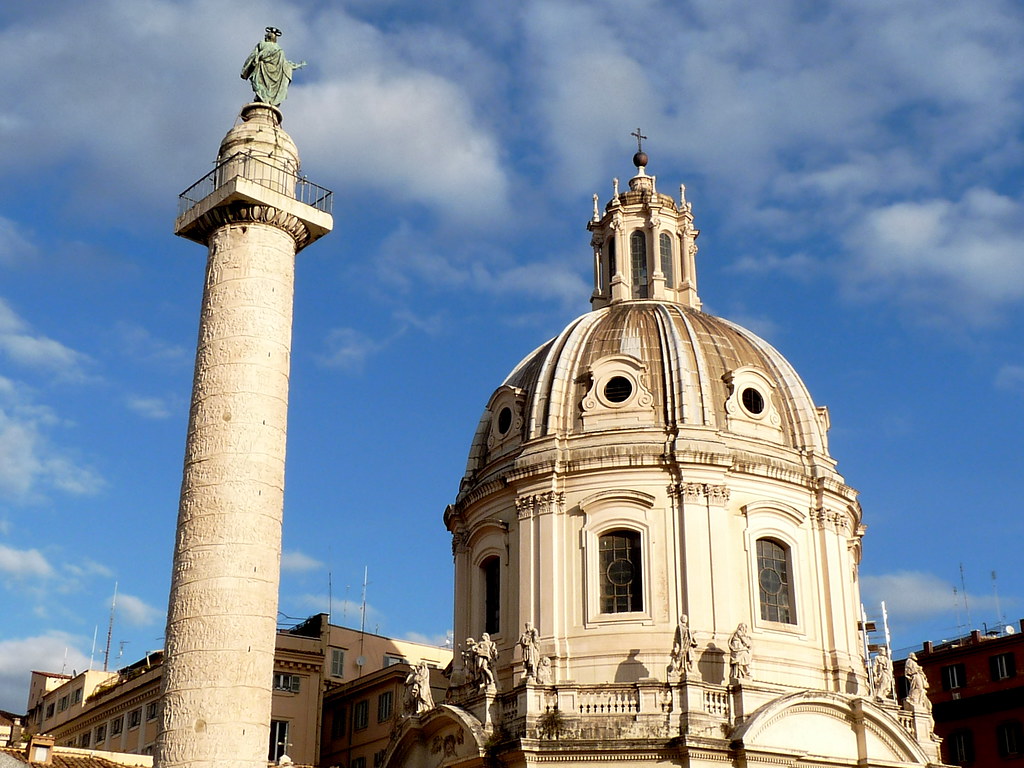1 What Seems to Be the Most Frequent Subject Matter in Baroque Art From Northern Europe?

This mail may contain affiliate links. If yous make a purchase, My Modern Met may earn an affiliate committee. Please read our disclosure for more info.
Throughout the 17th and 18th centuries, European artists and architects adopted an increasingly elaborate style. Known asBaroque, this approach is characterized by an ornate, over-the-peak aesthetic that evokes ethereality and aims to inspire awe.
Today, the Bizarre flow remains one of the almost celebrated cultural movements in western art history. Here, we take a look at this flamboyant way, exploring the history and development of its exuberant art and architecture.
What was the Baroque catamenia?
Named after barroco —a Portuguese term for an irregularly shaped pearl—the Baroque period is divers by the grandeur and opulence of its art and compages. With roots in Rome, the motion spread beyond Italian republic and other European countries between 1600 and 1750, becoming especially popular in France, Spain, and Republic of austria.
What are the major characteristics of Baroque art?
Baroque fine art and architecture tend to be incredibly extravagant and exhibit motility, tension, emotion, and dramatic apply of lite and shadow.
Every bit the Baroque period overlapped with the Italian Renaissance, it is non surprising that the two movements shared some stylistic similarities. Both Baroque and Renaissance artists employed realism, rich color, and religious or mythological subject thing, while architects working in both styles favored balance and symmetry. What sets the Baroque style apart from its Renaissance counterpart, however, is its lavishness—a characteristic axiomatic in both its art and architecture.
Baroque Fine art
Painting
While the subject matter and even style can vary between Baroque paintings, virtually pieces from this period have i thing in common: drama.
In the work of well-known painters similar Caravaggio and Rembrandt, an involvement in drama materializes as intense contrasts between beaming light and looming shadows.
Bizarre artists like Gentileschi, Poussin, and Rubens accomplished a heightened sense of drama through move. Oftentimes, this action-packed iconography was inspired by tales from the bible and stories from ancient mythology.

Gentileschi, 'David and Goliath' (ca. 1605-1607) (Photo: via Wikimedia Eatables, Public domain)
In improver to energetic compositions, Rubens captured drama through his rich and radiant color palette. "Rubens avoided painting in such a way that the color sank in. The luminous clarity of his work was proof of the excellence of his technique," creative person Max Doerner explains in The Materials of the Artist and Their Employ in Painting . "His colors had so much brilliance and bounden medium within themselves, that, like Van Eyck's pictures, they had a gloss without needing to exist varnished."
Sculpture
Figurative bronze and marble sculptures produced during this period draw an interest indynamism. Through swirling silhouettes, twisted contours, and flowing drapery, sculptors similar Bernini were able to evoke movement. Added elements like water fixtures frequently enhanced this theatrical approach.

Bernini, 'Apollo and Daphne' (1622-1625)
Like Renaissance statues—including Michelangelo's iconic David—Baroque sculptures were ofttimes intended to adorn stately buildings. They also were commissioned for other grandiose settings, like aureate church building interiors and royal gardens.

Bernini, 'The Ecstasy of Saint Teresa' (1647–1652)

Charles Le Brun, The Fountain of Apollo in the Gardens of Versailles (1668-1671)
Baroque Compages and Interior Blueprint
Interiors
Like to art of the era, Baroque interiors conveyed an involvement in over-the-pinnacle grandeur. Article of furniture and other decorative art objects frequently featuredscrolling—a patterned blueprint reminiscent of spiraling foliage—and other elements inspired past the natural world. Similarly, putti— Cupid-like figures—often adorned tapestries and ceiling paintings.
As expected, the materials used to arts and crafts these interiors exuded luxury, as evident in the "rich velvet and damask furnishings and gilt-woods and marquetry furniture" (Victoria and Albert Museum) often establish inside palaces.

The Dauphin's Bedroom in the Palace of Versailles
Exteriors
Bizarre architecture is also characterized by ornamentation. Often, the façades of Baroque buildings are adorned with intricate relief carvings, gilded accents, and columns—namely,Solomonic columns, whose corkscrew aesthetic was favored by architects from Spain to Austria.

St. Charles Church, Vienna (1737)
Architects all over Europe as well topped many Baroque basilicas, churches, and other edifices with domes. Besides oval domes, which were erected all over the continent, the preferred mode of domes typically varied by region, with onion domes prevailing in Central Europe and bulbous domes proving popular in Germany.
To a higher place all else, Baroque architecture conveyed a preference forbalance.

Dome of Santissimo Nome di Maria al Foro Traiano Church building, Rome (1736-1751)
Legacy
Though the Baroque style emerged centuries ago, it remains one of the well-nigh beloved movements in art history. Whether gazing at a priceless drove of paintings in the Louvre or throwing a coin in Rome'due south pop Trevi Fountain, the lasting legacy of Bizarre art and compages is every bit obvious as its opulence.
This article has been edited and updated.
Related Manufactures:
How Flowers Blossomed Into One of Art History's Nearly Popular Subjects
What Nosotros Can Learn From the Exquisite History and Ornate Aesthetic of Gothic Architecture
Magnificent Fine art Nouveau Architecture of the Groovy Antoni Gaudí
15 Near Famous Sculptures Y'all Need to Know
Source: https://mymodernmet.com/baroque-period/
0 Response to "1 What Seems to Be the Most Frequent Subject Matter in Baroque Art From Northern Europe?"
Post a Comment